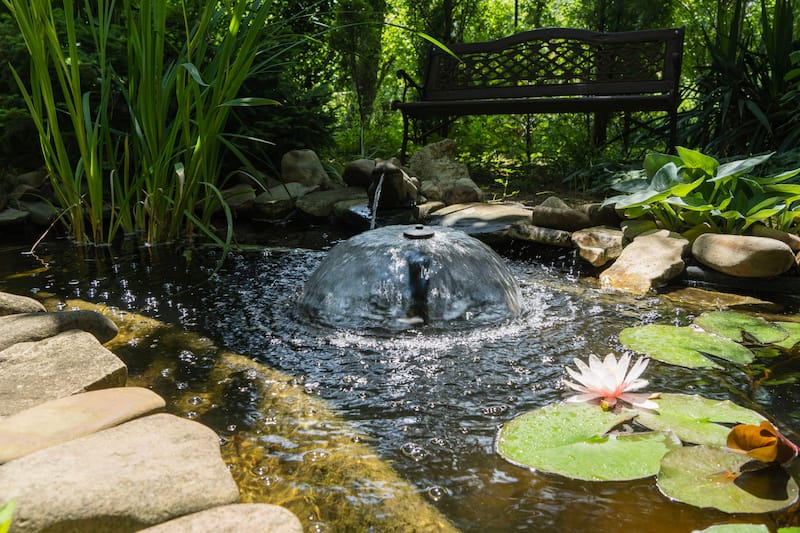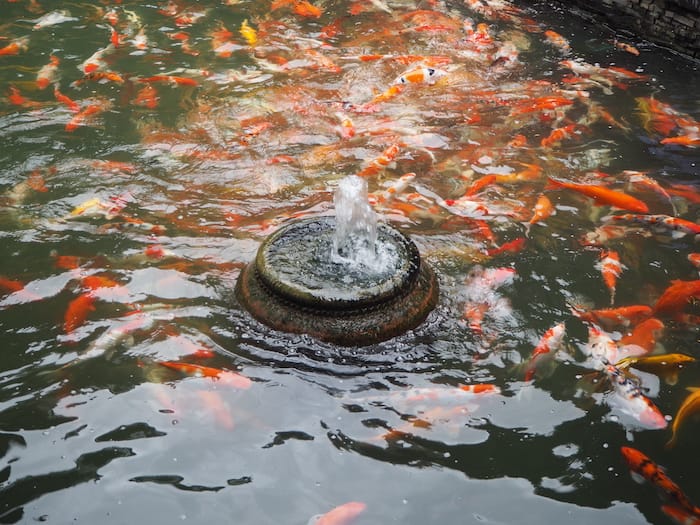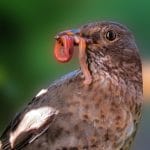Pond Fountains: Proven Steps to Pick the Best for Your Pond
Ponds & Water Features

Fountains vs. Waterfalls
A fountain is the star of the pond show. It throws water into the air, catches the light, and lets everyone know, yep, this pond is alive and well. It also does a handy job of stirring the surface so things don’t get stale. A waterfall, on the other hand, is quieter by nature. It’s more about the steady trickle and that backyard-zen feeling you get when you’re close enough to hear it.
If your goal is a centerpiece you can admire from the porch or driveway, go with a fountain. If you’re looking for the kind of sound that makes a chair and a glass of iced tea irresistible, a waterfall adds that touch. Many pond keepers end up wanting both — the fountain for the “wow,” and the waterfall for the “ahh.”
How Pond Fountains Work And Why They Matter
What a pond fountain does
Think of a pond fountain as your water’s lungs. It pulls water from below, sprays it up into the air, and as it falls, it picks up oxygen. That oxygen keeps everything from turning into a slimy, stagnant mess. The sound of water hitting water has a way of waking up a pond—it turns stillness into life. But a fountain isn’t just a pretty showpiece. When you size it right, it doubles as a caretaker: keeping the water fresh, the fish lively, and the evenings downright peaceful. I’ve set up plenty over the years, and I’ll admit—I’ve also gone too small before and paid the price in disappointment.

Benefits for water quality and fish
Healthy water means healthy fish. A well-sized fountain cuts down algae, keeps the water smelling fresh, and makes life a whole lot easier for koi or bass. It even helps with mosquitoes, since moving water isn’t their favorite hangout.
Display patterns and lighting basics
Then there’s the fun part: looks. Nozzles let you choose between tall plumes, wide sprays, or tiered patterns. Add lights, and suddenly you’ve got a nighttime show right in your backyard.
Step-by-Step Guide To Choosing the Right Fountain
Measure pond size and depth
Don’t guess. Grab a tape measure, figure out your pond’s acreage and depth, and write it down. Without these numbers, you’re basically throwing darts in the dark.
Define goals for aesthetics or aeration.
Ask yourself the simple question: Do I want beauty, function, or both? Some fountains are meant for show, others for serious aeration, and some straddle the line between the two.
Match horsepower, spray pattern, and nozzle
Horsepower controls spray size. Nozzles control the shape. For example, a half-horsepower unit might give you a 6-foot spray, while a 3-horsepower monster will throw water 20 feet in the air. Bigger isn’t always better—it just depends on your pond and your goals.
Sizing And Horsepower For Ponds Of All Sizes
Think about the feel of your pond. Here are friendly guidelines with approximate pond sizes in feet so that you can picture it:
- Tiny ponds (like a hot tub / small koi pond), maybe 6-10 feet across: A ¼ horsepower fountain is usually plenty. Soft splash, gentle look.
- Small backyard ponds (approximately 12-20 feet long, 8-15 feet wide): A ¼ to ½ HP unit provides a nice display and helps keep the water fresh.
- Medium ponds (roughly 25-40 feet across, similar to a tennis court or basketball court size): A ½ to 1 HP fountain tends to strike the sweet spot for both beauty and aeration.
- Larger ponds (50-80 feet wide or larger): You’ll want 1 HP or more to create a balanced fountain and make a visible splash without being overwhelmed by the water’s size.
Also, keep in mind:
If you want tall spray patterns or a dramatic display, consider increasing the HP slightly. If you prefer subtle beauty, you can aim for a more understated look. If your pond is deeper than about 6 feet, even a fountain that looks good won’t circulate deep water well — adding aeration from below helps.
Voltage and power supply choices
Smaller fountains run on standard 110–120V outlets. Larger, estate-sized models often require 220–240V. Always check before you order—you don’t want to haul in a fountain only to realize your power can’t handle it.
Shallow water and koi pond considerations
If your pond is shallow (less than 3 feet), a fountain may not reach the bottom layers. Koi also don’t love turbulent water, so softer spray patterns often keep them happier.
Fountain Or Aerator: Which Is Best For Your Pond?
Key differences and best use cases
- Fountains are pretty displays and provide surface aeration.
- Aerators = Aerators don’t put on a show, but they quietly handle the deep-down oxygen job fountains can’t reach.
When to combine a fountain with a pond aerator
For big or deep ponds, the sweet spot is often using both. The aerator handles oxygenation, the fountain handles the wow factor.
Aeration performance in deep ponds
Over 6–8 feet deep? A fountain alone usually can’t keep up. That’s where bottom diffusers shine.
Fountain vs. Aerator Comparison
A quick guide to help you pick the right setup for your pond.
| Feature | Pond Fountain | Pond Aerator | Best For |
|---|---|---|---|
| Main Purpose | Visual display + surface aeration | Deep oxygen circulation | Ponds needing visual appeal vs. deeper oxygen |
| Oxygen Coverage | Surface layer only | Whole water column (bottom to top) | Large/deep or fish-heavy ponds |
| Fish Health | Good for koi/goldfish in shallow ponds | Essential for bass, trout, deep-water species | Mixed stocking, warmer climates |
| Aesthetic Value | High (spray patterns, lights, sound) | Low (function over form) | Showpiece ponds vs. utility |
| Horsepower Needs | ~0.5–1.5 HP per acre (display) | Varies by diffuser/pond depth | Right-sizing to pond dimensions |
| Energy Use | Higher (continuous pump & spray) | Generally lower for same aeration effect | Budget-conscious operation |
| Cost Range | $1,500–$7,000+ (size/pattern dependent) | $800–$5,000+ (diffusers, compressor) | Varies with pond size & goals |
| Best Use Case | Showpiece ponds, estates, koi ponds | Farm ponds, fisheries, deep water | Combining both in large/deep ponds |
Power, Energy, And Budget Considerations
Solar pond fountains pros and cons
Solar is great for small garden ponds where you don’t want cords. However, in larger ponds, solar panels usually lack sufficient horsepower. They’re fun, but don’t expect miracles.
Operating cost estimates and energy tips
Running a 1-horsepower fountain nonstop can cost you $40–$60 per month in electricity. Add a timer and cut the run time down to daylight hours, and you’ll save a nice chunk.
Timers, smart plugs, and run time by season
In hot months, run it longer to battle algae. In fall and spring, scale it back. A smart plug can automate the whole thing.
Product Recommendations
Best options for small, 1-acre, and commercial ponds
- Small ponds (<½ acre): Kasco 3400 series.
- 1-acre ponds: Scott Aerator North Star.
- Commercial/estate ponds: Kasco 5-horsepower units or Otterbine fountains.
Trusted brands such as Kasco and Scott Aerator
Both Kasco and Scott Aerator are American-made, durable, and easy to maintain. Parts are also easy to find, which is beneficial in the long run.
Seasonal care, cleaning, and winter storage
- In cold climates, pull the unit before the temperature drops below freezing.
- Clean the intake screen regularly.
- Store indoors to avoid cracked housings and damaged motors.
Pond Fountain FAQs
Is a fountain good for a pond?
What is the cheapest way to oxygenate a pond?
What size fountain for a small pond?
Is a pond fountain as good as an aerator?
Share this post
Table of Contents
- Fountains vs. Waterfalls
- How Pond Fountains Work And Why They Matter
- What a pond fountain does
- Benefits for water quality and fish
- Display patterns and lighting basics
- Step-by-Step Guide To Choosing the Right Fountain
- Measure pond size and depth
- Define goals for aesthetics or aeration.
- Match horsepower, spray pattern, and nozzle
- Sizing And Horsepower For Ponds Of All Sizes
- Voltage and power supply choices
- Shallow water and koi pond considerations
- Fountain Or Aerator: Which Is Best For Your Pond?
- Key differences and best use cases
- When to combine a fountain with a pond aerator
- Aeration performance in deep ponds
- Fountain vs. Aerator Comparison
- Power, Energy, And Budget Considerations
- Solar pond fountains pros and cons
- Operating cost estimates and energy tips
- Timers, smart plugs, and run time by season
- Product Recommendations
- Best options for small, 1-acre, and commercial ponds
- Trusted brands such as Kasco and Scott Aerator
- Seasonal care, cleaning, and winter storage
- Pond Fountain FAQs
All categories
More From The Garden
Disclosure: This post may contain affiliate links. That means if you click and buy, The Bright Garden may earn a small commission, at no extra cost to you. We only recommend products we’ve vetted and believe will benefit our readers.












